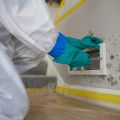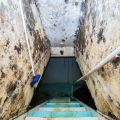6 Common Types of Mold Found in Your Home
Mold growth can either be visible or hidden. While most molds are harmless, there are some species that are commonly found in most American homes. ServiceMaster of Cobb discusses them in this article.
Common Types of Mold Found in Your Home
Alternaria
This species is considered to be the most common allergenic mold in the world. Alternaria appears as a velvet-textured mold having brown or dark green hairs, which often appears as a result of water damage. It is usually found in damp places, such as sinks, bathtubs and showers.
Aureobasidium
Trichoderma
Trichoderma colonies are usually white or cream-colored, but turn into green due to spore formation. This mold can be found on materials with a high cellulose content, such as wood and paper. Trichoderma can be harmful to immunocompromised individuals and trigger allergic reactions. One particular species, Trichoderma longibrachiatum, is dangerous to human health. Exposure to T. longibrachiatum is toxic and weakens the immune system.
As soon as any of the following mold types is discovered, it is essential to call in a professional mold removal company to have it remediated immediately. Do-it-yourself mold removal won't work; in fact, it could even worsen the damage when done improperly.
Mold Remediation in Cartersville, GA? Contact ServiceMaster by Cobb
Mold growth should not be prolonged as soon as it is discovered. When it comes to professional mold remediation services, ServiceMaster of Cobb is here to help. We have been helping both residential and commercial properties recover from serious mold damage since 2004. ServiceMaster of Cobb has a team of licensed and certified technicians who have undergone extensive training to provide top-tier mold remediation services to each client. We utilize the latest technologies to remove mold from homes and bring them back to pre-damage condition as quickly as possible.
Contact ServiceMaster of Cobb at (678) 264-3310 or connect with us online to schedule an appointment. We service Atlanta, Sandy Springs, Roswell, Alpharetta, Marietta, Smyrna, Rome, Dalton, Douglasville, Kennesaw, Woodstock, Canton, Acworth, Cartersville, Calhoun, and Dallas, GA and surrounding areas.







